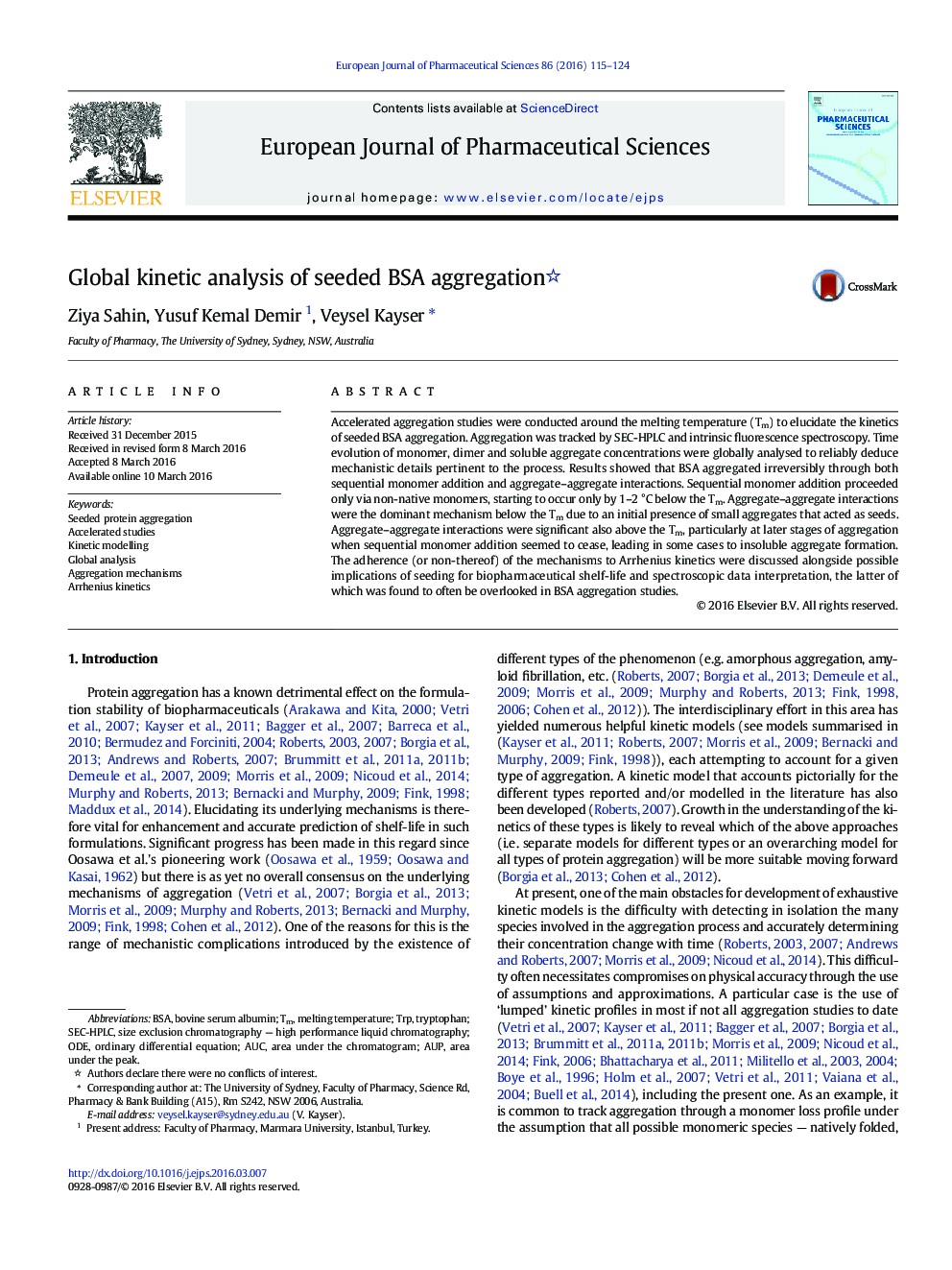| Article ID | Journal | Published Year | Pages | File Type |
|---|---|---|---|---|
| 2480071 | European Journal of Pharmaceutical Sciences | 2016 | 10 Pages |
Accelerated aggregation studies were conducted around the melting temperature (Tm) to elucidate the kinetics of seeded BSA aggregation. Aggregation was tracked by SEC-HPLC and intrinsic fluorescence spectroscopy. Time evolution of monomer, dimer and soluble aggregate concentrations were globally analysed to reliably deduce mechanistic details pertinent to the process. Results showed that BSA aggregated irreversibly through both sequential monomer addition and aggregate–aggregate interactions. Sequential monomer addition proceeded only via non-native monomers, starting to occur only by 1–2 °C below the Tm. Aggregate–aggregate interactions were the dominant mechanism below the Tm due to an initial presence of small aggregates that acted as seeds. Aggregate–aggregate interactions were significant also above the Tm, particularly at later stages of aggregation when sequential monomer addition seemed to cease, leading in some cases to insoluble aggregate formation. The adherence (or non-thereof) of the mechanisms to Arrhenius kinetics were discussed alongside possible implications of seeding for biopharmaceutical shelf-life and spectroscopic data interpretation, the latter of which was found to often be overlooked in BSA aggregation studies.
Graphical abstractFigure optionsDownload full-size imageDownload high-quality image (156 K)Download as PowerPoint slide
